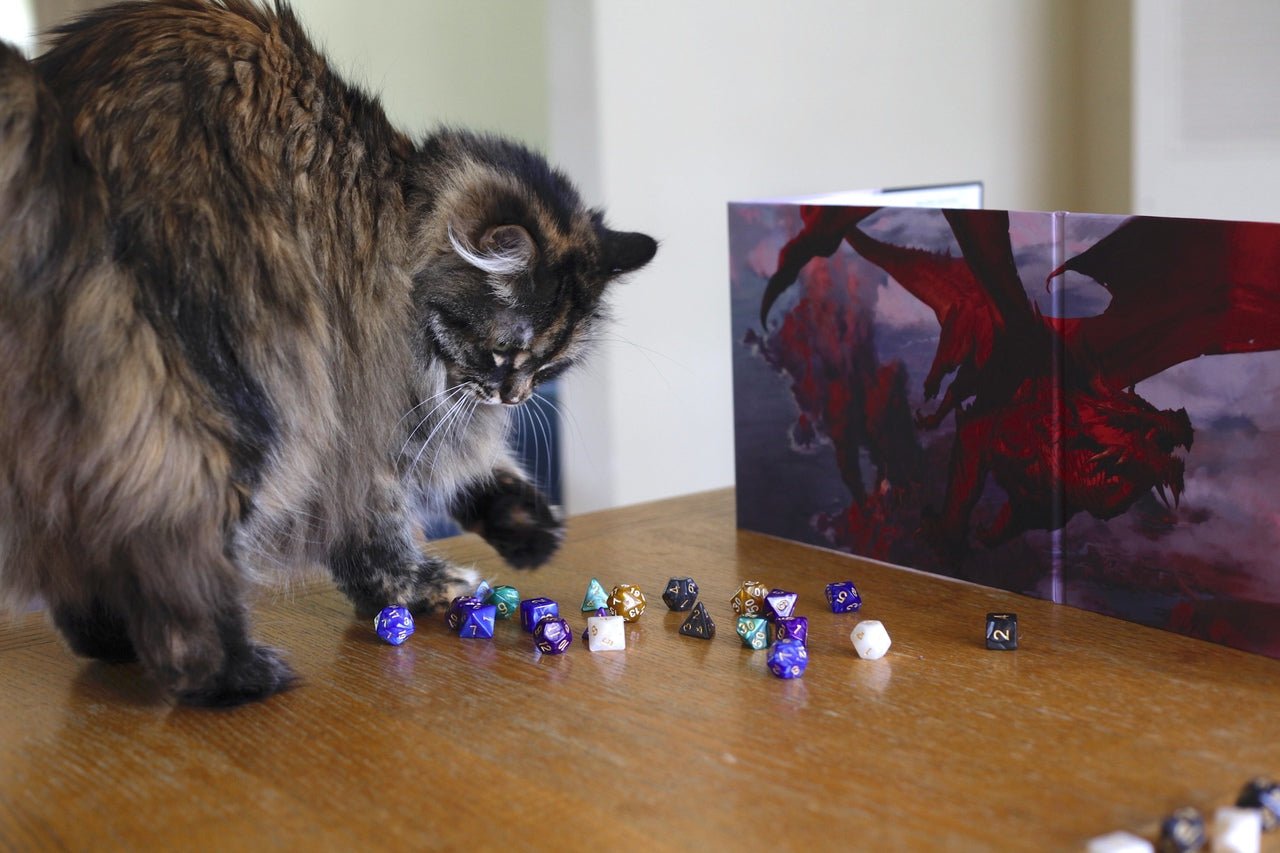Have you ever wondered what the secrets of the liquid core material in liquid core resin dnd dice are? Why does it make the dice so different? Next, let's explore different liquid core filling materials and how to make your own liquid core resin dice.
Common liquid core filling materials and characteristics
Water
Water is the most easily available and low-cost liquid core filling material. It has excellent fluidity, which allows the dice to show a smart effect when rolling. Water itself is colorless and transparent, which is convenient for adding various pigments to create rich and diverse colors. However, water is highly volatile, and long-term use may cause the liquid core to decrease, affecting the performance of the dice. Moreover, in low temperature environments, water is easy to freeze and may damage the dice.
Oily liquids
Oily liquids such as mineral oil and silicone oil are commonly used liquid core filling materials. They have good stability, are not easy to volatilize, and can maintain the state of the liquid inside the dice for a long time. Oily liquids have a strong ability to dissolve pigments, and can be mixed with bright and long-lasting colors. However, oily liquids have a high density, which will increase the weight of the dice, may affect the smoothness of rolling, and are more troublesome to clean up after leakage.
Gel
Gel is a semi-solid filling material that gives dice a unique texture. It has high transparency and can be adjusted in hardness, color and luminous effect by adding different additives. Gel has good stability, is not easy to leak, and can effectively protect the internal structure of the dice. However, its production is relatively complex and costly. If the proportions are not properly mixed during the production process, the quality may be affected.
Quicksand
Quicksand dice bring a unique dynamic beauty. It is usually made of fine sand, sequins or other suspended particles mixed with liquid. When the dice roll, these particles flow and flicker in the liquid, creating a dreamlike scene. There are many types of quicksand filling materials, and you can choose the color, size and shape of sand and sequins according to your preferences. However, when using it, you need to pay attention to the particle size and weight to avoid affecting the balance and rolling performance of the dice, and the sealing of the dice is required to be high.
Mica powder
Mica powder is a filling material with a unique luster. Adding it to the liquid core can make the dice appear shimmering under the light, adding a touch of gorgeousness and mystery. Mica powder comes in a variety of colors, from brilliant gold and silver to soft colors. It can be mixed with other liquids to enhance the visual effect of the dice. However, mica powder may precipitate, so you need to stir it evenly and choose the right liquid carrier when making it.
Choose liquid core filling materials according to your needs
1.Pursue beauty
If you pay more attention to the appearance of the dice, oily liquid, gel, quicksand and mica powder are all good choices. Oily liquid with sequins and mica powder can present rich, bright and shimmering colors; gel can make artistic dice, and can also be combined with quicksand to create a rich and dynamic effect; the flow effect of quicksand itself adds a dreamy and mysterious atmosphere to the dice.
2.Unique gameplay
If you want to add a unique gameplay to the game, you can try special materials. For example, magnetic liquid mixed with other filling materials can make the dice produce a wonderful movement effect under the action of a magnetic field; gel containing heat-sensitive or photosensitive materials can change color under different temperatures or light conditions, bringing more surprises to the game.
3.Economical
If your budget is limited, water is a more economical choice. Add pigment and a small amount of mica powder to make colorful dice with glittering effects. You can also choose alcohol as a relatively low-cost liquid carrier, but be careful of its volatility.
How to make liquid core resin dice?
Prepare materials and tools
Materials: resin, curing agent, selected liquid core filling material (such as quicksand, mica powder, etc.), pigment, sequins, molds, etc.
Tools: electronic scale, stirring rod, measuring cup, dropper, gloves, goggles, etc.
Make molds
You can buy ready-made dice molds online or in physical stores, or use 3D printing or handmade molds. But make sure the mold surface is smooth, free of bubbles, and the shape and size meet the requirements.
Mix resin
According to the ratio of resin and curing agent, use an electronic scale to accurately weigh. Pour both into a measuring cup and stir thoroughly with a stirring rod to ensure that no bubbles are generated. You can add pigments as needed to mix your favorite colors.
Prepare the liquid core
If you use quicksand to fill, mix the appropriate amount of sand, sequins and mica powder evenly, then add the appropriate amount of liquid (such as water or oily liquid) and stir. If you use only mica powder, mix it with the liquid thoroughly to ensure that it is evenly dispersed.
Fill the liquid core
Slowly pour the prepared liquid core into the mold, be careful not to fill it up, and reserve a certain amount of space for resin infusion.
Infusing resin
Slowly pour the prepared resin into the mold to cover the liquid core. Be careful to avoid bubbles. If there are bubbles, use a dropper or toothpick to gently poke them.
Curing and demolding
Place the mold in a well-ventilated place with a suitable temperature and wait for the resin to cure. The curing time depends on the type of resin and the ambient temperature, and generally takes several hours to a day. After curing, carefully remove the dice from the mold.
Post-processing
Grind and polish the demolded dice to make its surface smooth. You can add patterns or decorations to the surface of the dice according to your preferences to further enhance its beauty.
By following the above steps, you can make a unique liquid core resin dice. Choose the right liquid core filling material, unleash your creativity, and make this dice your unique symbol in tabletop games, adding more fun to the game.
Are you already attracted by the liquid core material of the liquid core resin dice? Do you have any interesting experience using liquid core resin dice? Feel free to share in the comments section.



